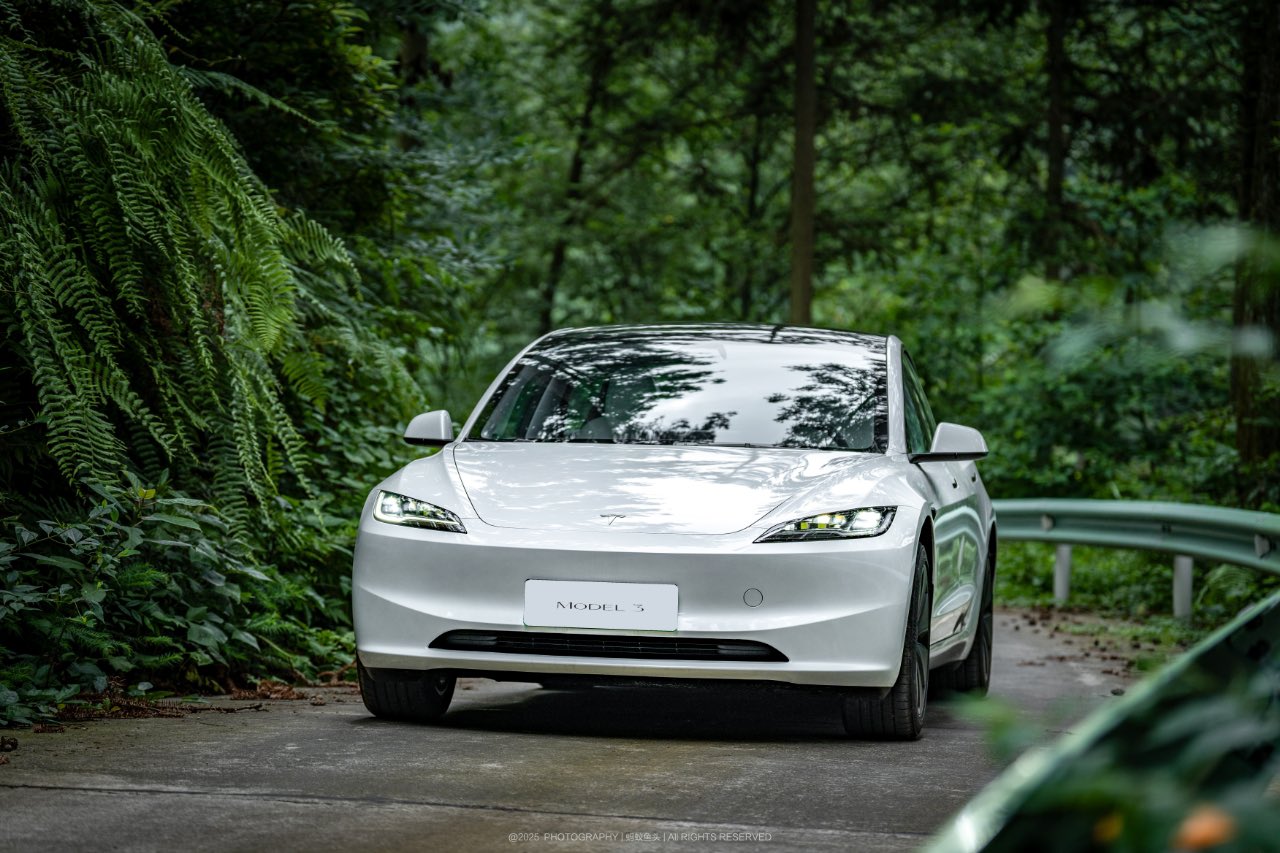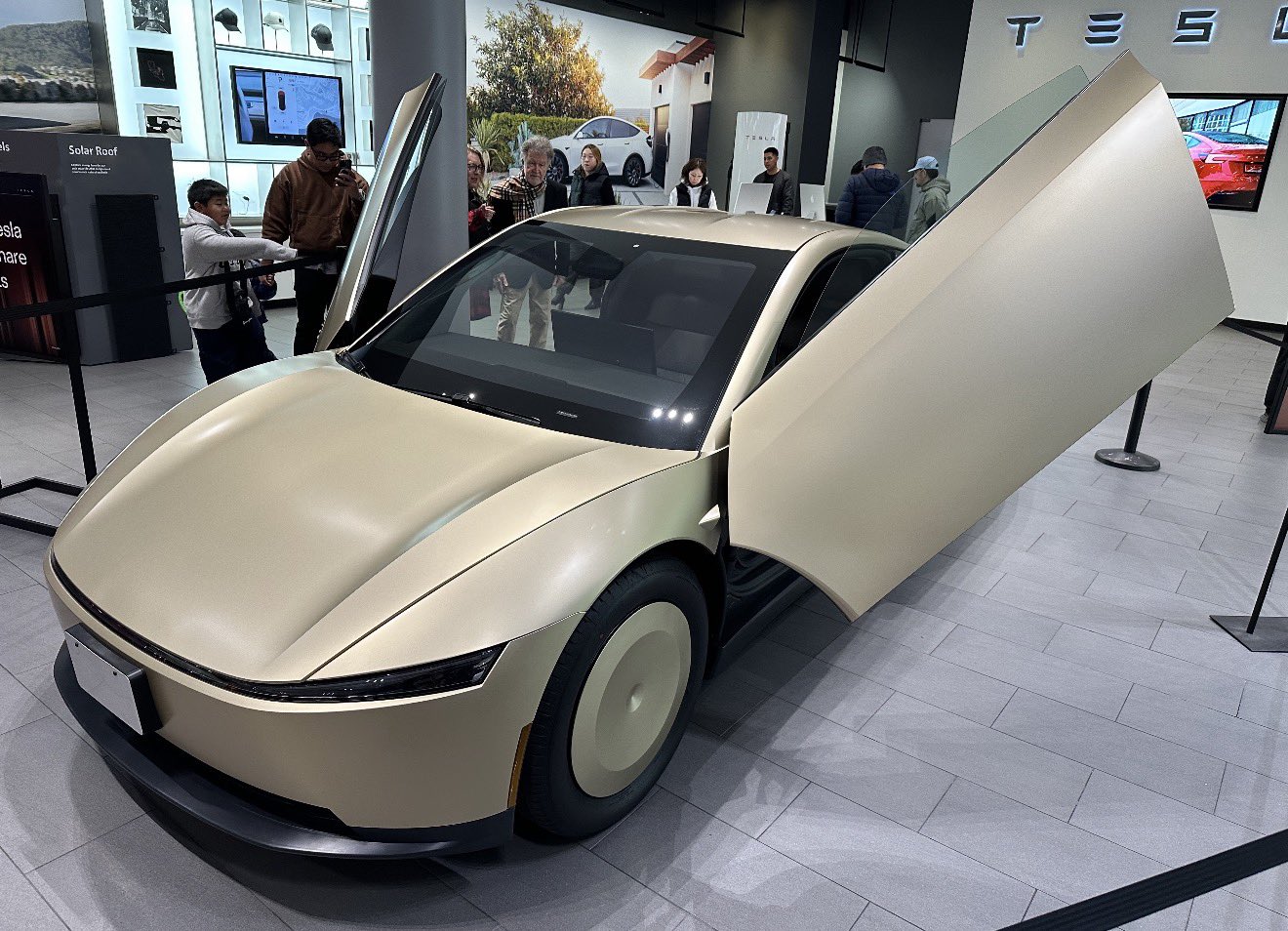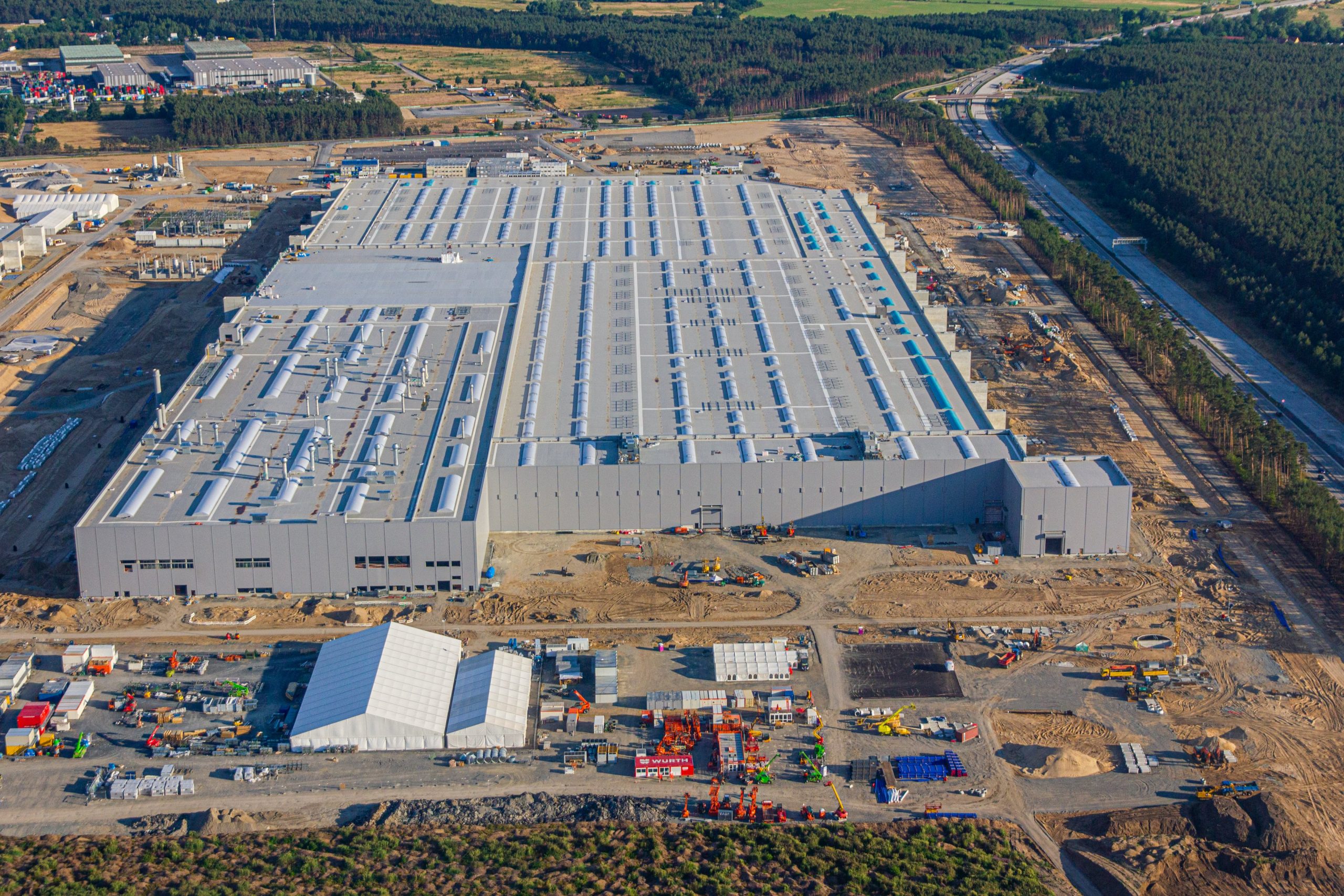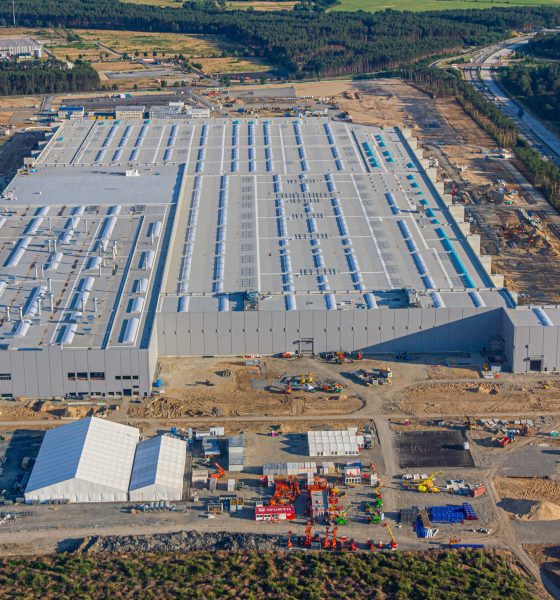Tesla Gigafactory Berlin is about to receive its final environmental approval, with Brandenburg Minister-President Dietmar Woidke holding a press conference later today to discuss the milestone. It took a long time to get to this point, but after two years, it appears that Tesla’s Model Y factory in Germany is finally about to wake up.
Information shared with Teslarati indicates that the press conference later will be attended not only by Brandenburg Minister-President Dietmar Woidke. Other key personalities in Giga Berlin’s development such as Environment Minister Axel Vogel and Economics Minister Jörg Steinbach (SPD) will also be present at the event.
Ulrich Stock, the department head responsible in the State Office for the Environment, Sascha Gehm, the First Deputy of the Oder-Spree district, and Arne Christiani, the Mayor of Grünheide, are also expected to be present at the press conference.
A quick refresher of what’s been happening in Giga Berlin can be found below.
Another permit after the final environmental approval
It should be noted that the final environmental approval is a massive step forward for Gigafactory Berlin. However, the final environmental approval does not mean that vehicle production could immediately start. An operating license is still required before Model Ys can be produced. Tesla must then meet further requirements before Giga Berlin’s Model Y production lines could start operations.
Teslarati has contacted several local government offices to inquire about the requirements that Tesla needs to submit to secure Giga Berlin’s operational license for vehicle production. Local government offices have so far declined to provide additional information, at least for now.
An ongoing water dispute
Giga Berlin has a lot of critics, and it has faced opposition over the years. Among the most notable talking points against Giga Berlin as of late is its water supply. Conservationists and local resident groups have expressed their fear that Giga Berlin will put the local water supply at risk. Legal action has been taken about the issue. Local water association Strausberg-Erkner (WSE) believes that Tesla’s water supply for Giga Berlin could still be terminated, but such a development may result in Tesla taking legal action.
Tesla is set to receive a supply of 1.4 million cubic liters of drinking water every year, though this may increase as Gigafactory Berlin expands its operations. It should be noted that a nearby coal mine and an oil refinery in the area are consuming far more water annually than Tesla. CEO Elon Musk has also said that Tesla will “recycle as much as humanly possible,” adding that he’s “pretty confident that (Giga Berlin) will be the most environmentally friendly factory in the world.”
A summary of delays
Gigafactory Berlin started its construction about two years ago, and initially, the facility seemed to be progressing at around the same pace as its sibling, Gigafactory Shanghai. Tesla also planned to start vehicle production in summer 2021, a target that was ultimately not met. This was partly due to several delays, which included a time when construction had to be paused due to hibernating snakes in the area. Tesla also faced much opposition from environmentalist groups who opposed the tree-cutting on the site. The EV maker responded by planting more trees than it had cut.
Even Tesla itself became a source of delays for the launch of Giga Berlin. Tesla moves at a very quick pace, and it updates its plans for its facilities accordingly. In Giga Berlin’s case, the company decided to add the construction and operation of a battery factory. This resulted in Giga Berlin’s applications requiring updates, causing further delays. Thankfully, most of Giga Berlin’s delays seem to have been dealt with for now, and the facility is in its final stages before it could start its operations.
Future plans
Tesla’s Gigafactories are ever-developing, and the same is true for Giga Berlin. As per information shared with German news agency rbb24, new applications for further expansion are expected to be submitted soon. Battery recycling facilities are also reportedly planned for the site, and so is a production line for Powerwall batteries, which may be equipped with cells that are produced in the Giga Berlin complex. Teslarati has attempted to confirm these reports, but local office representatives have declined to comment on the matter.
Giga Berlin’s press conference for the facility’s final environmental approval is expected to start at 3:30 p.m. CET (6:30 a.m. PST).
Don’t hesitate to contact us with news tips. Just send a message to simon@teslarati.com to give us a heads up.

News
Another Tesla Model 3 variant sold out for January 2026 in China
A look at Tesla China’s order page shows that new Model 3 LR RWD orders now have an estimated delivery date of February 2026.

Another Tesla Model 3 variant in China appears to have sold out for January 2026, with the vehicle now showing an estimated delivery date of February 2026 for new orders. This bodes well for the all-electric sedan, which has maintained notable sales despite more affordable rivals like the Xiaomi SU7 and its crossover sibling, the Model Y.
Model 3 LR RWD joins February 2026 queue
A look at Tesla China’s order page for the all-electric sedan shows that new Model 3 Long Range Rear Wheel Drive orders now have an estimated delivery date of February 2026. Priced from RMB 259,500 ($36,810), the LR RWD sits as the second-lowest-priced trim in Tesla China’s four-variant Model 3 lineup. The move follows a similar delivery timeframe for the Model 3 Performance, which remains the most expensive option for the vehicle, as noted in a CNEV Post report.
The estimated delivery dates of the two remaining Model 3 variants remain unchanged for now. The base RWD version, starting at RMB 235,500, and the LR AWD variant, priced from RMB 285,500, both continue to list estimated delivery times of 4-6 weeks. Tesla China, for its part, has continued to list in-stock Model 3 vehicles and is actively encouraging buyers to select inventory units for delivery before the end of the year.
Model Y delays and policy shifts
Delivery timelines for the Model Y in China are also stretching into 2026. All customized Model Y variants now show February 2026 as their estimated delivery date, except for the entry-level version, which still lists January 2026. Tesla has been urging customers since November to prioritize purchasing inventory vehicles, a push aimed at maximizing year-end deliveries.
Timing matters for Chinese buyers due to upcoming changes in government incentives. China’s new energy vehicle purchase tax exemption will be scaled back in 2026, which means customers who take delivery next year could face higher tax costs compared to those who are able to receive vehicles before the end of the year.
As per data from the China Passenger Car Association, Tesla recorded retail sales of 73,145 vehicles in November, down 0.47% year over year. From January through November, Tesla’s retail sales in China totaled 531,855 units, a 7.37% year-over-year drop.
News
Wedbush’s Dan Ives sees ‘monster year’ ahead for Tesla amid AI push
In a post on X, the analyst stated that the electric vehicle maker could hit a $3 trillion market cap by the end of 2026 in a bullish scenario.

Wedbush analyst Dan Ives is doubling down on Tesla’s (NASDAQ:TSLA) long-term upside. In a post on X, the analyst stated that the electric vehicle maker could hit a $3 trillion market cap by the end of 2026 in a bullish scenario, thanks to the company’s efforts to develop and push its artificial intelligence programs.
An aggressive valuation upside
Ives, Wedbush’s global head of tech research, stated in his post that Tesla is entering a pivotal period as its autonomy and robotics ambitions move closer to commercialization. He expects Tesla’s market cap to reach $2 trillion in 2026, representing roughly 33% upside from current levels, with a bull case up to a $3 trillion market cap by year-end.
Overall, Ives noted that 2026 could become a “monster year” for TSLA. “Heading into 2026, this marks a monster year ahead for Tesla/Musk as the autonomous and robotics chapter begins. We believe Tesla hits a $2 trillion market cap in 2026 and in a bull case scenario $3 trillion by end of 2026… as the AI chapter takes hold at TSLA,” the analyst wrote.
Ives also reiterated his “Outperform” rating on TSLA stock, as well as his $600 per share price target.
Unsupervised Full-Self Driving tests
Fueling optimism is Tesla’s recent autonomous vehicle testing in Austin, Texas. Over the weekend, at least two Tesla Model Ys were spotted driving on public roads without a safety monitor or any other occupants. CEO Elon Musk later confirmed the footage of one of the vehicles on X, writing in a post that “testing is underway with no occupant in the car.”
It remains unclear whether the vehicle was supported by chase cars or remote monitoring, and Tesla has not disclosed how many vehicles are involved. That being said, Elon Musk stated a week ago that Tesla would be removing its Safety Monitors from its vehicles “within the next three weeks.” Based on the driverless vehicles’ sightings so far, it appears that Musk’s estimate may be right on the mark, at least for now.
News
Production-ready Tesla Cybercab hits showroom floor in San Jose
Tesla has implemented subtle but significant updates to both the Cybercab’s exterior and interior elements.

Tesla has showcased what appears to be a near-production-ready Cybercab at its Santana Row showroom in San Jose, California, giving visitors the closest look yet at the autonomous two-seater’s refined design.
Based on photos of the near-production-ready vehicle, the electric vehicle maker has implemented subtle but significant updates to both the Cybercab’s exterior and interior elements, making the vehicle look more polished and seemingly more comfortable than its prototypes from last year.
Exterior and interior refinements
The updated Cybercab, whose photos were initially shared by Tesla advocate Nic Cruz Patane, now features a new frameless window design, an extended bottom splitter on the front bumper, and a slightly updated rear hatch. It also includes a production-spec front lightbar with integrated headlights, new wheel covers, and a license plate bracket.
Notably, the vehicle now has two windshield wipers instead of the prototype’s single unit, along with powered door struts, seemingly for smoother opening of its butterfly doors. Inside, the Cybercab now sports what appears to be a redesigned dash and door panels, updated carpet material, and slightly refined seat cushions with new center cupholders. Its legroom seems to have gotten slightly larger as well.
Cybercab sightings
Sightings of the updated Cybercab have been abundant in recent months. At the end of October, the Tesla AI team teased some of the autonomous two-seater’s updates after it showed a photo of the vehicle being driven through an In-N-Out drive-through by employees in Halloween costumes. The photos of the Cybercab were fun, but they were significant, with longtime Tesla watchers noting that the company has a tradition of driving its prototypes through the fast food chain’s drive-throughs.
Even at the time, Tesla enthusiasts noticed that the Cybercab had received some design changes, such as segmented DRLs and headlamps, actual turn signals, and a splitter that’s a lot sharper. Larger door openings, which now seem to have been teasing the vehicle’s updated cabin, were also observed at the time.










